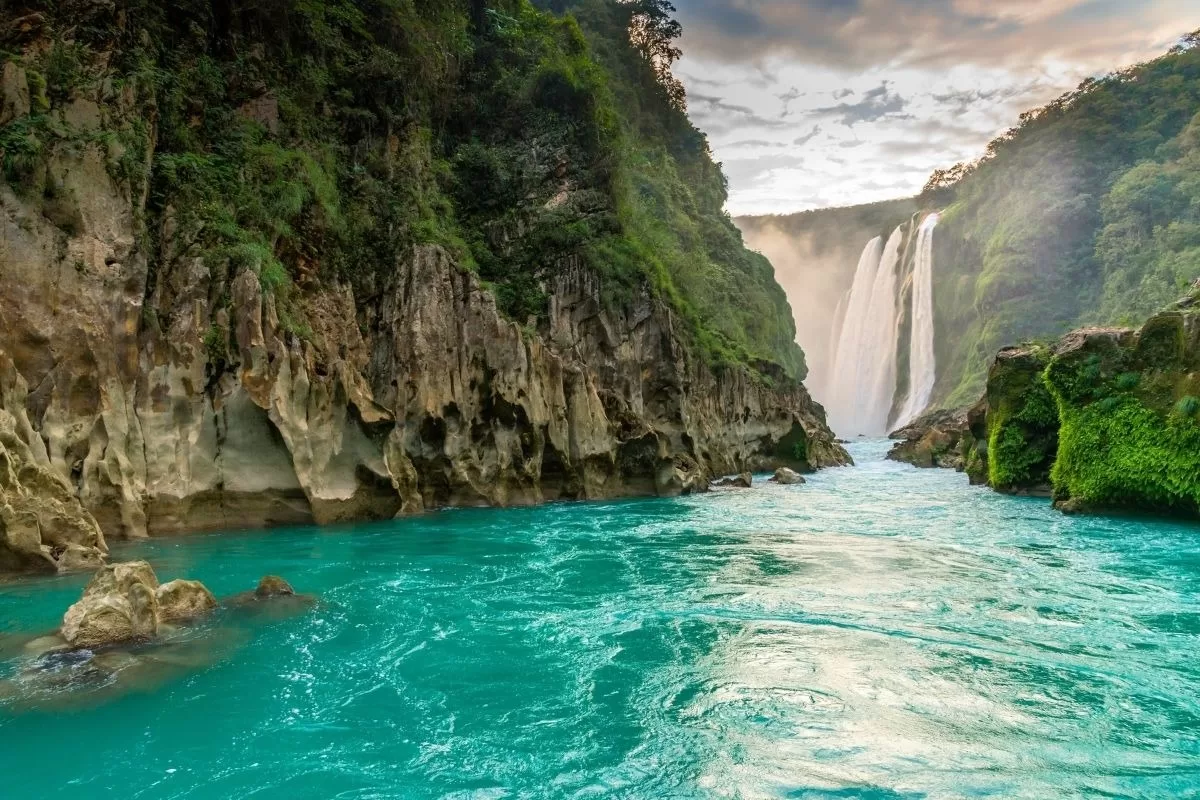Secret waterfalls and jungles that are off the beaten path are among Mexico’s hidden wonders.
Beaches with powder-soft sands in Mexico cannot be denied for their sheer beauty. Mexico was originally discovered by tourists because of its vast stretches of sand and palm trees swaying lazily in the wind. It goes without saying that Mexico has some of the world’s best beaches. While the country is full of natural wonders, there is so much more to the country than its stunning coastline if you take a closer look.
Mexico has one of the most diverse topographies in the world. Its mountains reach a height of more than 18,000 feet, and its canyons are some of the deepest and largest in the world. This country is home to gushing waterfalls, raging rivers, alpine villages, deserts, and secret-filled jungles. You can find the natural beauty you fly halfway around the world to see just a short flight away. Listed below are ten of Mexico’s most stunning natural wonders.
Hierve el Agua, Oaxaca

Oaxaca is the ideal destination for a Mexico vacation if you are looking for cuisine, culture, history, and design. A petrified rock formation gives the appearance of a waterfall running down a cliffside just outside the city of Oaxaca. Overlooking the green-carpeted mountains undulating in every direction as far as the eye can see, you’ll find a series of natural mineral pools at the top of the cliff.
Located on the edge of a cliff, Hierve el Agua is the result of natural springs calcifying. It appears as if a waterfall is paused while tumbling down the towering cliff in this mesmerizing optical illusion.
Renting a car or hiring a driver is the best way to visit this site. There is also the option of taking a tour bus. It’s best to go early if you want to see everything for yourself. Near the entrance, you can find small shops and vendors selling fresh fruit dusted with tajin, popsicles, and even ice-cold beer. The views here are spectacular, but you’re coming for the Instagram shots.
Copper Canyon, Chihuahua

There is something spectacular about America’s Grand Canyon. Do you know that Mexico has a more profound version? This massive system of plunging ravines is actually the culmination of six different canyons that run across northern Mexico and are known as Barrancas del Cobre (Copper Canyon).
In terms of area, this canyon is even bigger than the Grand Canyon in the United States. Six different rivers carved the canyons, which empty into the Gulf of California. A river-carved ravine towers high above the rust-colored walls that gave it its name.
You can see the canyons by traveling with El Chepe railway, otherwise known as the Ferrocarril Chihuahua al Pacfico railway. In addition to traversing suspended bridges, the track hugging the cliffs overlooks sheer drops into the valley below. Explore the communities that have lived in this part of Mexico for centuries by hiking or getting off at stops along the way.
Sumidero Canyon, Chiapas

With misty, cool mountains and thick, steamy jungles, Chiapas is one of Mexico’s natural wonders. To reach the plunging Sumidero Canyon, travelers descend a mountain path from the lofty peaks of San Cristobal de las Casas.
With 3,000-foot rock walls on either side, this natural canyon was carved by the Grijalva River. A national park was established at the site in the 1980s, and it’s easy to see why. Views of the canyon’s rim can be seen from six lookout points.
The most popular way to explore the canyon is with a boat tour that meanders down the river, letting visitors gaze up at the imposing rock walls. However, those who don’t want to take a boat tour can still enjoy this park by hiking, kayaking, and rappelling. Although jaguars, crocodiles, and rattlesnakes are abundant in the park, you will likely still need a guide.
Isla Espiritu Santo, Baja California Sur

The city of La Paz will become more and more familiar to you over the next few years. Baja California Sur’s capital, located on the Sea of Cortez, is slowly gaining momentum as one of Mexico’s best tourist destinations. In addition, you should schedule some time to visit Isla Espiritu Santo while you’re there.
It looks like something out of a sci-fi novel. A turquoise sea is surrounded by copper-colored mountain spines. One of the world’s most diverse marine ecosystems sits atop this UNESCO World Natural Heritage site and national park.
There are no hotels on Espiritu Santo – that would totally ruin the atmosphere. There are dive sites, natural reefs, and sunken ships instead. While miles of hiking trails weave over rusty ridges for panoramic views, calm, languid water makes the perfect backdrop for stand-up paddleboarding.
Calakmul, Campeche
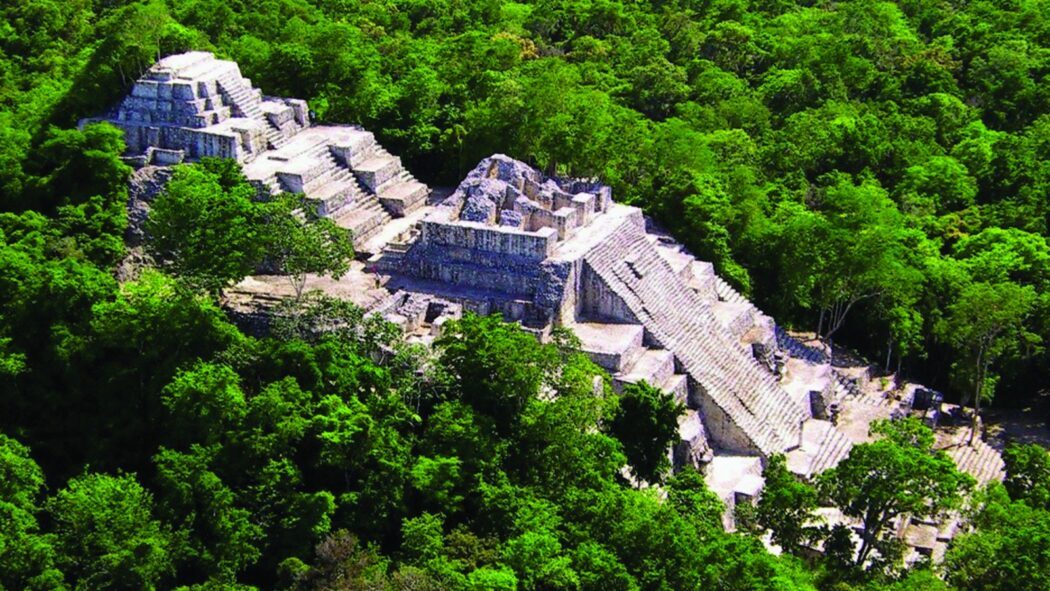
A jungle and a mystery shroud Campeche. Travelers are immediately plunged into a hot, steamy jungle once they leave the Gulf of Mexico capital city. Some of the best-kept secrets of the region can be found within this protected jungle that occupies most of the state.
In the Calakmul Biosphere Reserve, you’ll find Calakmul, an ancient Mayan city. Calakmul is so enigmatic because there is still so much we don’t know about it. We do, however, know it was a thriving powerhouse in the Mayan world, located just 22 miles from Guatemala. Tikal, the most famous Mayan city in present-day Guatemala, was rivaled by it during its most powerful years.
During its peak, Calakmul was known as the “City of the Two Adjacent Pyramids.” A total of 6,700 buildings were home to more than 50,000 people. Seven square miles of the site are actually excavated, but only a small percentage is accessible to the public. Despite thick jungle and the passage of time, the rest still lies in wait.
Las Coloradas, Yucatán
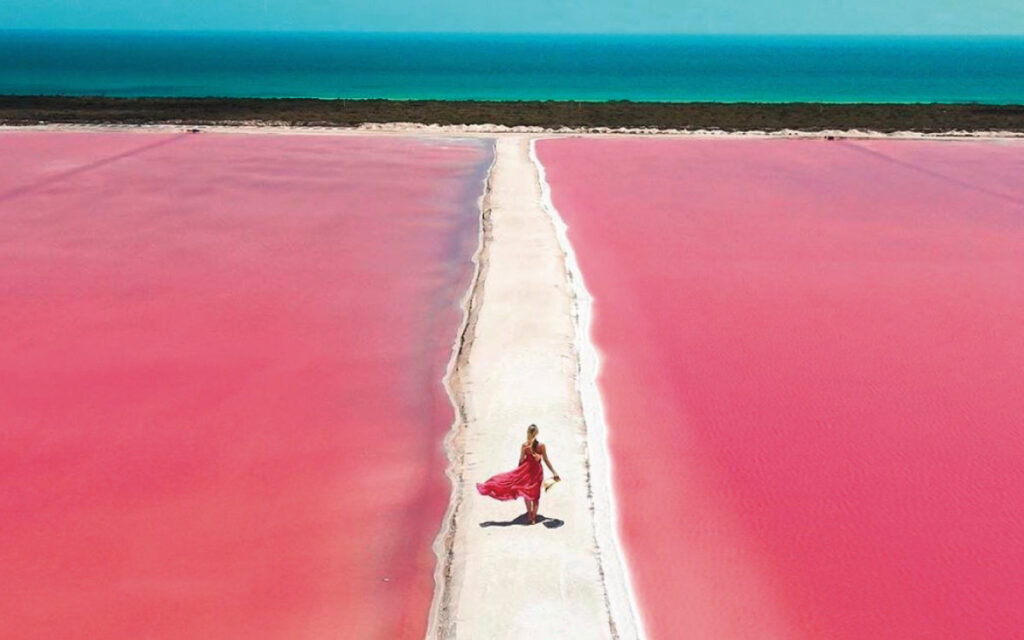
Las Coloradas in Mexico certainly isn’t short on color, and if you’re looking for a mind-blowing palette, check it out. One of the most visually stunning spots in the country is located in the Yucatan Peninsula, where the land meets the Gulf of Mexico.
Imagine cotton candy-hued pools bordered by pale, pastel blues with emerald green edges from the nearby Rio Lagartos Biosphere Reserve. Las Coloradas is a series of pink lakes that dot the landscape along the Gulf of Mexico in this protected wetland area.
Among the animals that inhabit the 150,000-acre protected area are jaguars, sea turtles, flamingos, and crocodiles. The reserve itself is mesmerizing, but its blush-colored pools are truly a sight to behold. In the super-saline solution, algae, plankton, and shrimp live, giving the lagoons their pink color. This part of Mexico is known for its salt production in Las Coloradas.
With bubble gum-pink pastels plastered all over Instagram, Las Coloradas has changed a lot. A once-hidden gem has become a popular location for influencers and content creators to take pictures. The number of tour buses here has increased, which may dampen the experience. It’s still a stunning display of colors.
Tamul Waterfall, San Luis Potosi
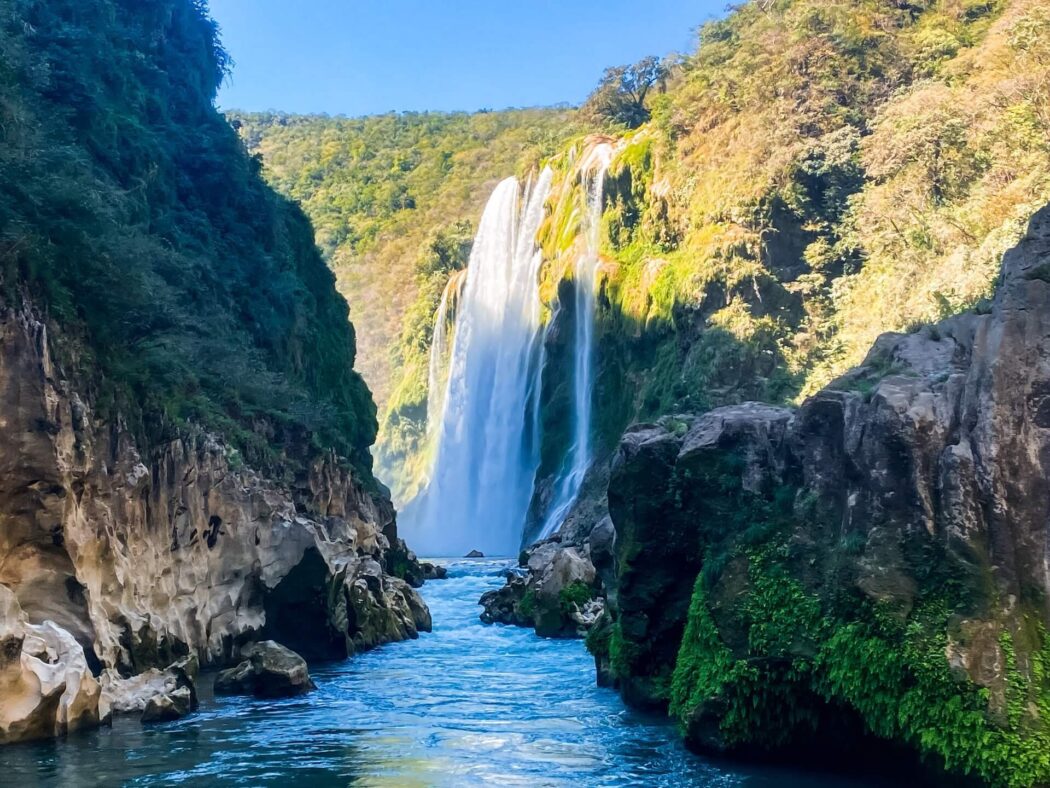
With a height of 340 feet, the Tamul Waterfall roars from the cliffs and cascades into the Tampaón River. Tamul Waterfall is the most breathtaking of the waterfalls in San Luis Potosi, a state known throughout Mexico for its waterfalls.
Known for its turquoise hues and powerful force, Tamul Waterfall plunges down cliffs with great speed. A breathtaking 1,000-foot-wide waterfall is created when the Gallinas River meets the Santa Maria River.
There is some planning and adventure involved in reaching the waterfall. The reward is certainly worth the effort for those who put in the effort. From Tanchachin, you can take a small panga boat upstream for about two hours to reach the waterfalls. If you plan on visiting during the summer, avoid visiting when it rains heavily. Additionally, avoid holidays, as crowds flood in during those times.
Peña de Bernal, Querétaro
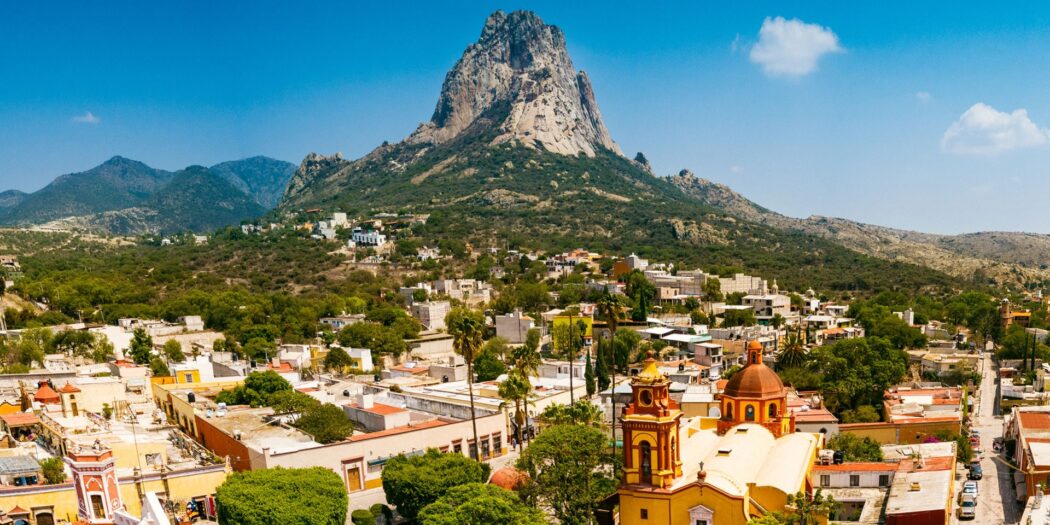
There is a guardian in San Sebastián Bernal. The looming Pe#a de Bernal, which rises 1,100 feet above this colonial 17th-century village, is an international treasure and one of the world’s largest monoliths.
For Indigenous Otomi-Chichimeca people, Pea de Bernal is a sacred site, rising more than 8,000 feet above sea level. A wooden cross that weighs nearly 200 pounds is carried by descendants of this group to the summit in a glorious, painstaking procession to this day.
There is a breathtaking view of Querétaro from the summit of Pea de Bernal. There is a groomed hiking trail that leads up one of its sides, but reaching its summit requires some skill – the last 150 feet are sheer, vertical rock faces. It is one of the most spectacular natural wonders in Mexico, even if you experience it from below.
Nanacamilpa Firefly Sanctuary, Tlaxcala

There is something magical about the Piedra Canteada forests of central Mexico. An ethereal glow emanates from the thick, shadowy forests as the sun sets and the sky turns inky blue. Summer brings hundreds of thousands of fireflies to life in the darkness, illuminating the wilderness.
There’s something magical about the Nanacamilpa Firefly Sanctuary. Near Mexico City, the forests are simply ablaze with the celestial floating constellations of fireflies at the foot of the Iztacchuatl and Popocatépetl volcanoes. Forest tours are offered during mating season, and eco-hotels offer overnight accommodations.
Pico de Orizaba, Veracruz

There are plenty of superlatives about Mexico – the best beaches, the oldest ruins, and the best cuisine. However, it is also home to one of the world’s tallest dormant volcanoes. You’re about to meet North America’s third highest mountain, Pico de Orizaba.
Professional climbers practice at this central Mexico landmark, which stands nearly 18,500 feet above sea level. A beacon that has stood the test of time, it’s one of Mexico’s most important climbing mountains, located 220 miles east of Mexico City.
Its name comes from the Aztec name Ahuilizapa, which means “Place of Playing Water.” The last eruption occurred in 1846, and its slopes are covered with glaciers.


